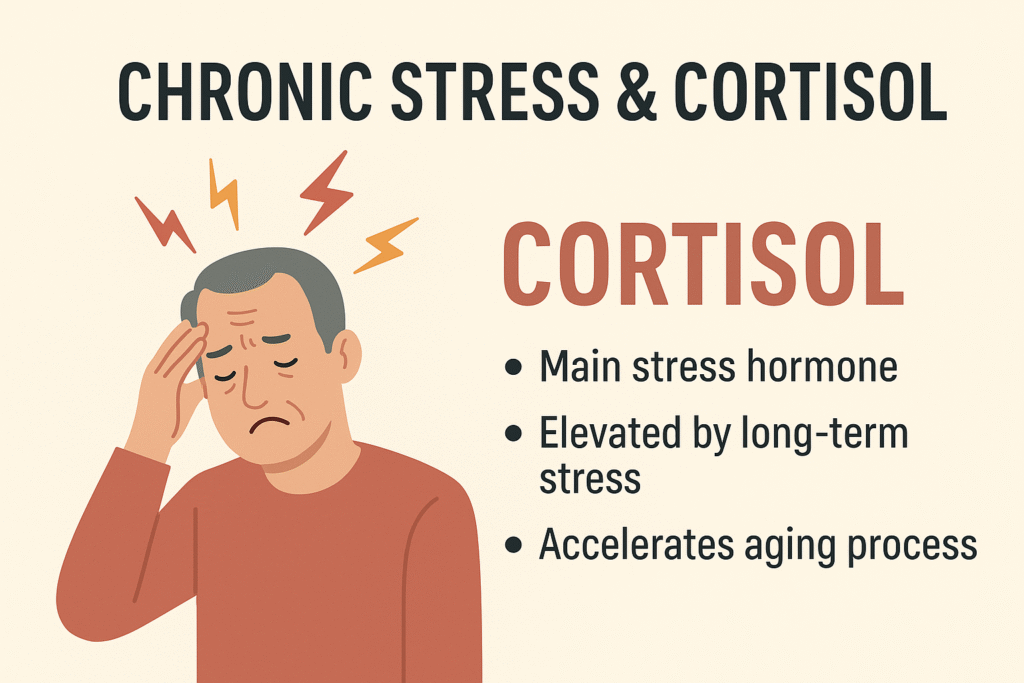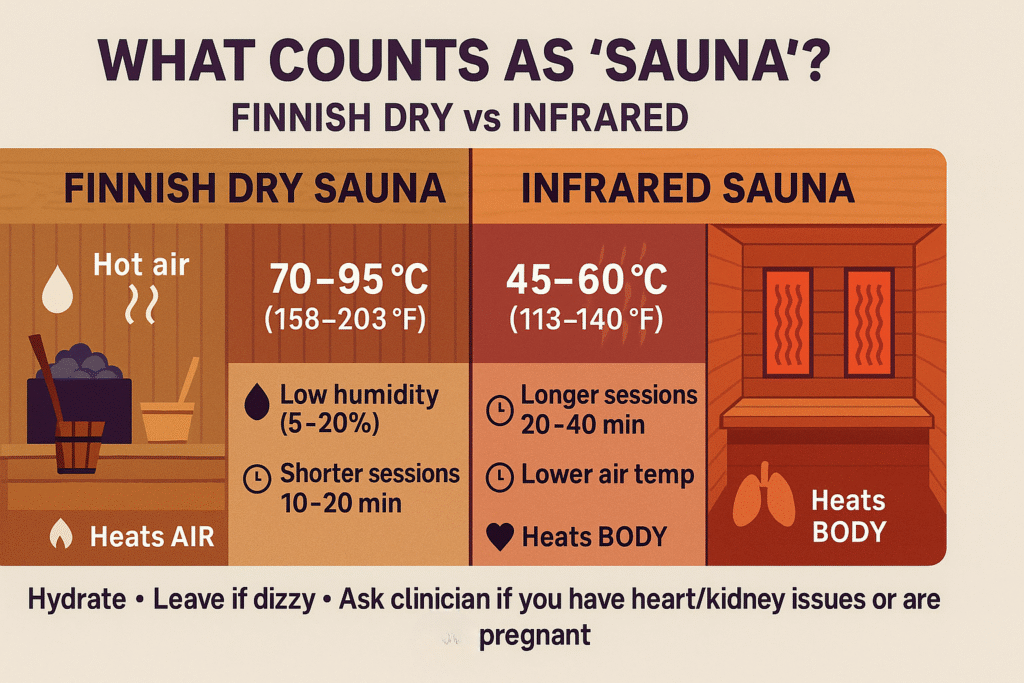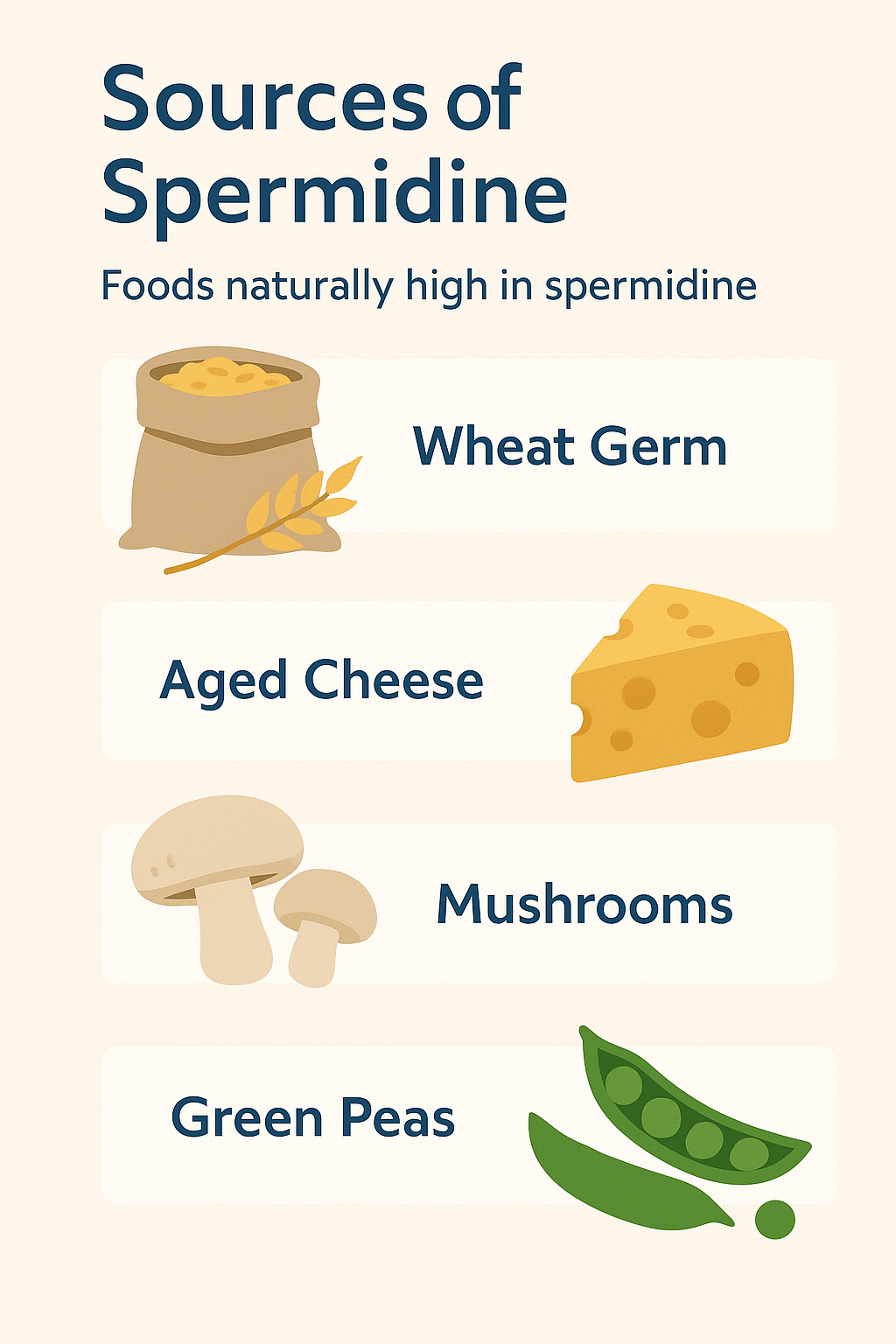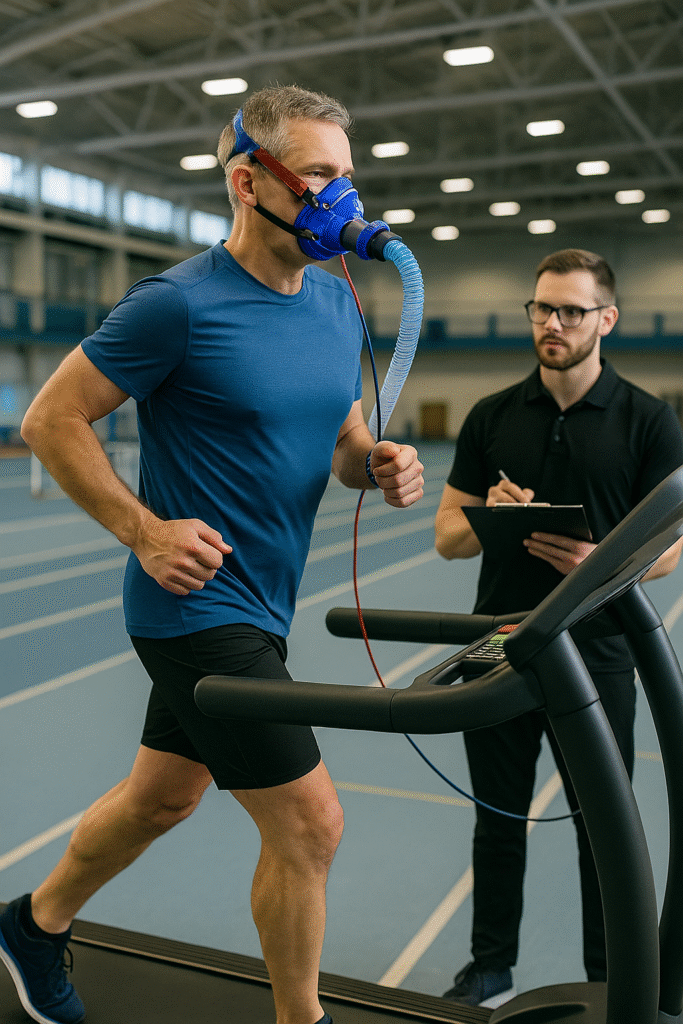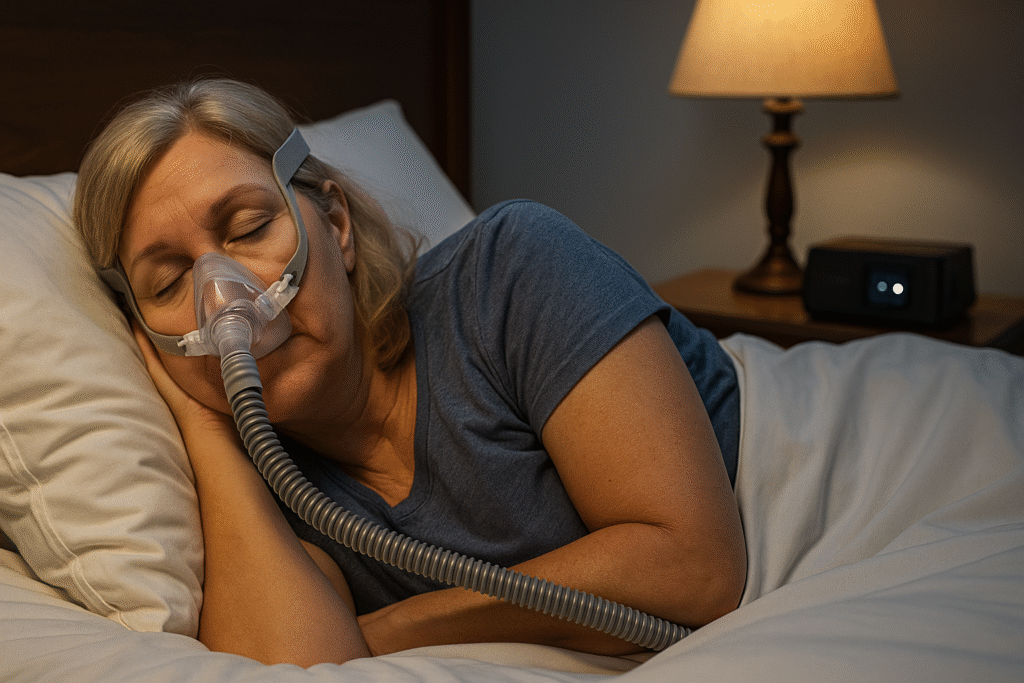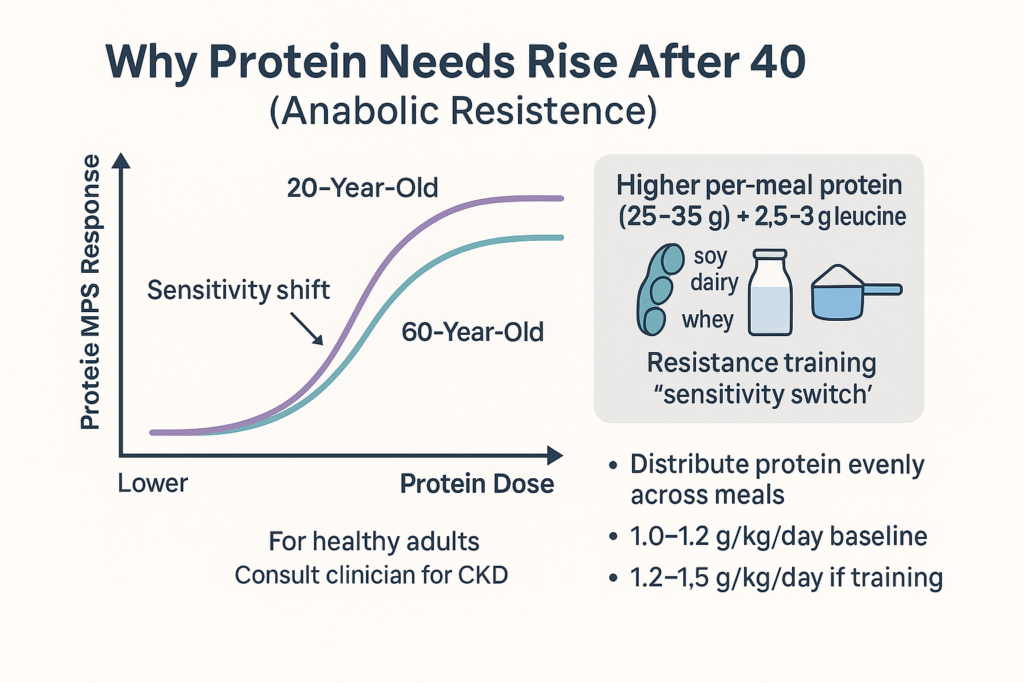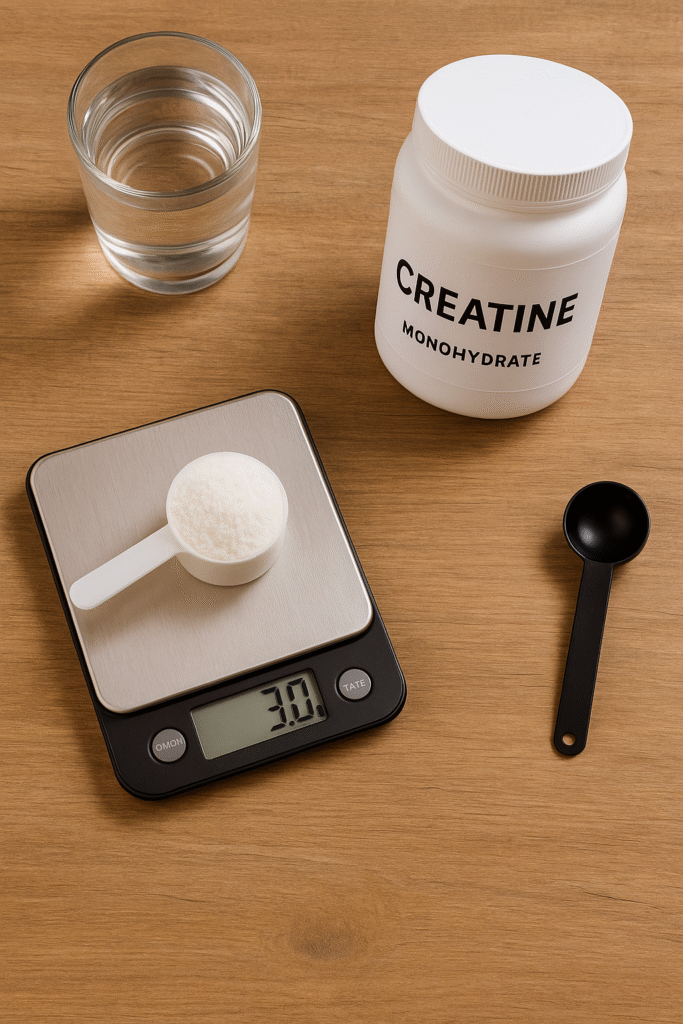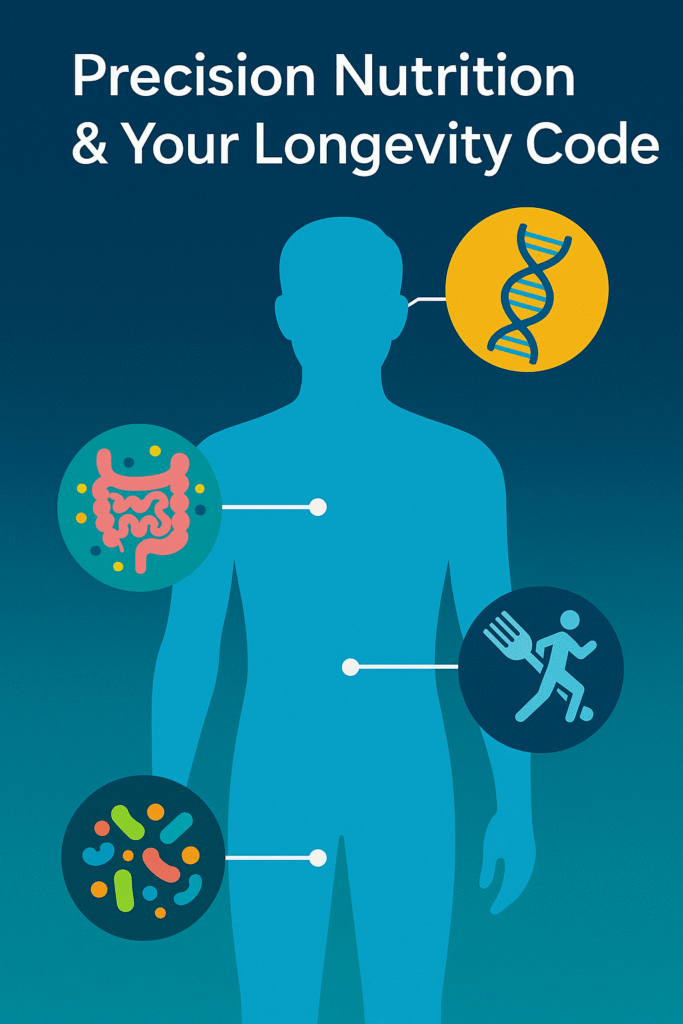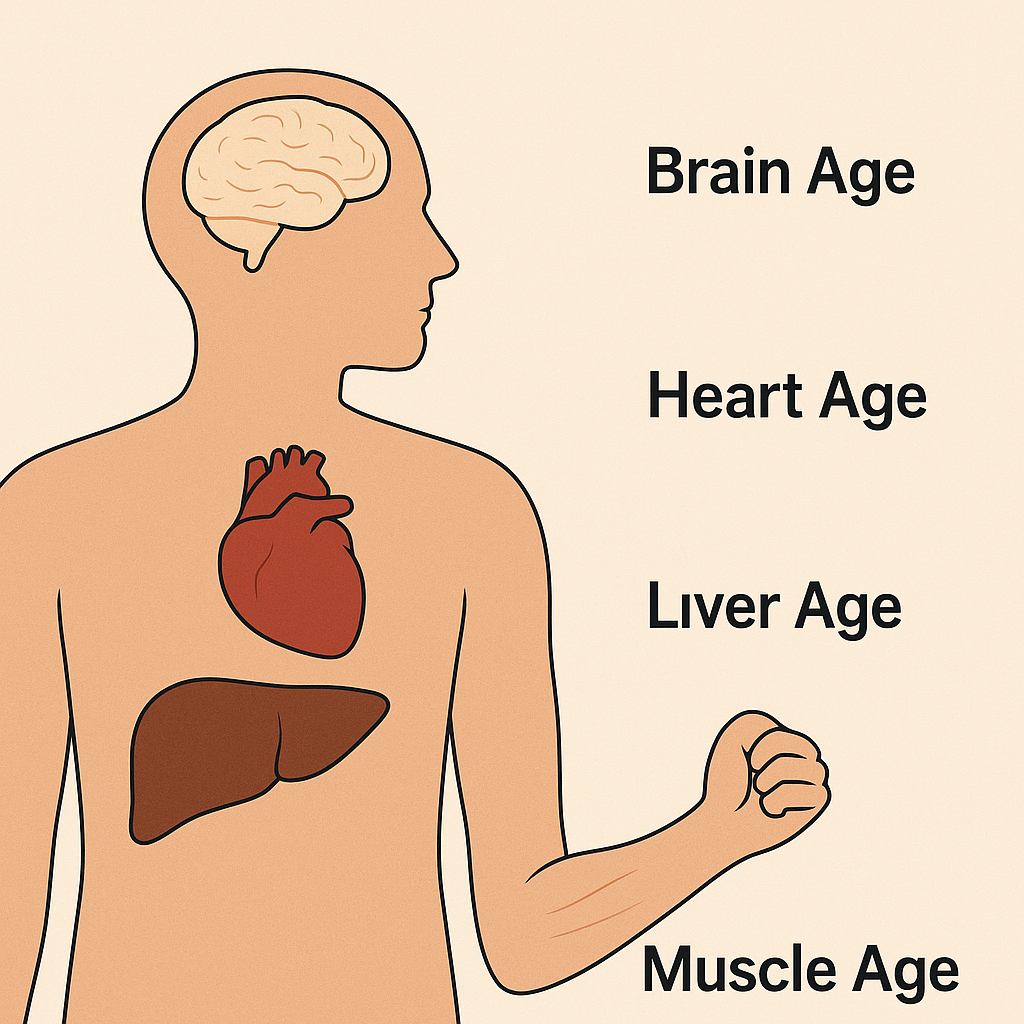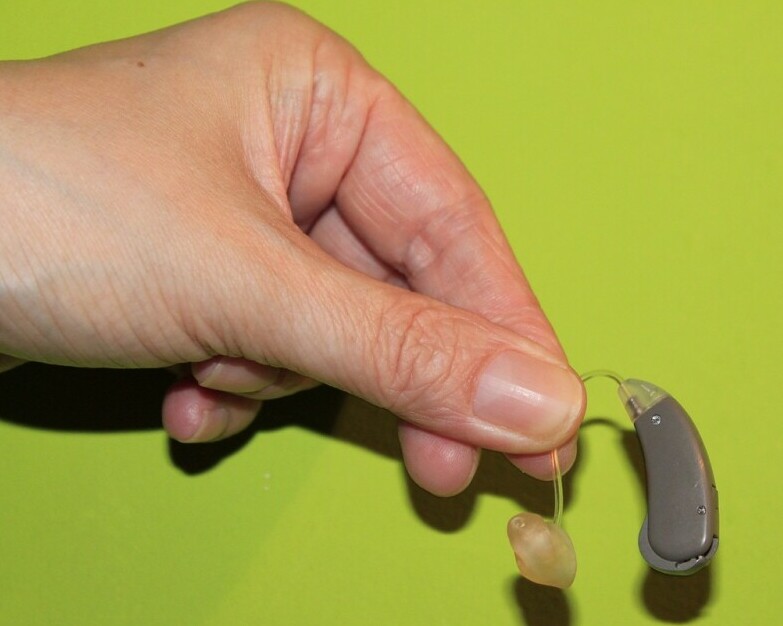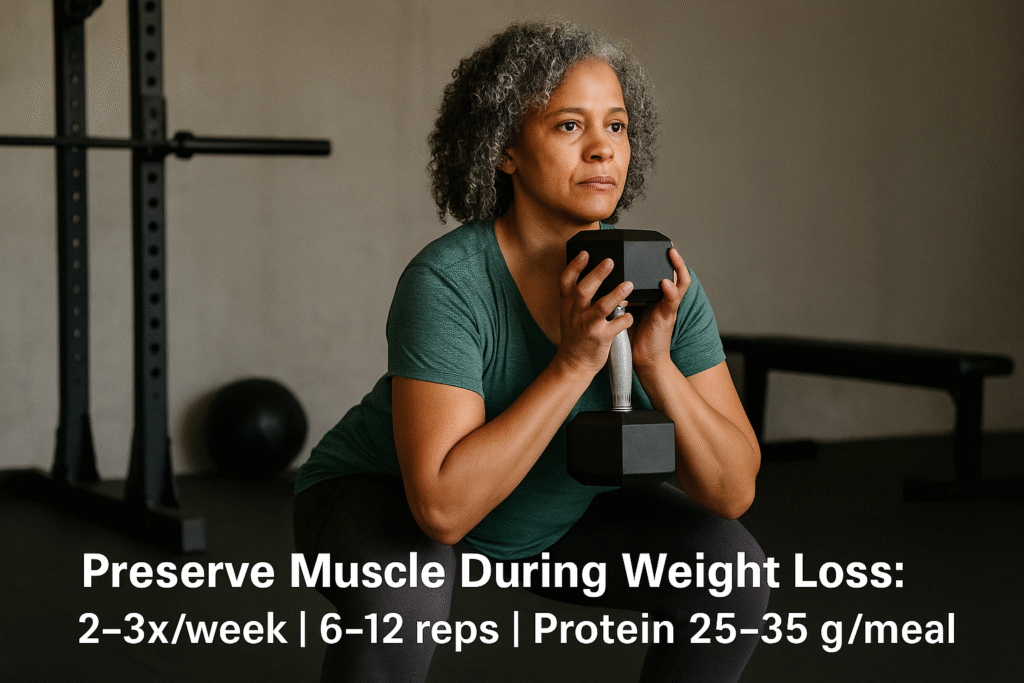Have you ever felt more energized, motivated, or alive just by being in a different environment—even if nothing else in your life had changed?
That’s not a coincidence.
Your environment may be one of the most powerful, underrated factors in how you age, especially after 40. While we often focus on diet, exercise, and supplements (all critical!), the space you live in, the people you surround yourself with, and even the “emotional temperature” of your day‑to‑day life are silently shaping your longevity, vitality, and motivation.
As someone approaching my mid‑50s, I’ve experienced this firsthand how the environment around me impacts my state of well-being and energy especially regarding the environment of the activities I enjoy away from work. The proximity or access to environments where I engage in activities I enjoy contribute to my overall state of mind and well-being since this is where I chose to spend my time to relieve my stress and heighten my endorphins. In this article, we’ll unpack how you can take control of your surroundings—physical, social, emotional—and how scientific data backs it all up. You’ll also get a fresh audit tool, and practical steps to reshape your environment for more vitality.
The Power of Environment: More Than Just Decor
Let’s redefine “environment.” It’s not just what your home looks like. It’s a combination of five key elements:
Your Physical Space: Is it cluttered or calming? Open or confining?
Your Social Circle: Who are you spending time with, and how do they influence your mood or energy?
Your Lifestyle Patterns: Your daily routines, habits, and rituals.
Your Inputs: The media, content, and conversations you engage with.
Your Emotional Climate: Is your day filled with support and optimism—or stress and discouragement?
Each of these shapes how your body and mind perceive the world. And when exposed to prolonged stress, negativity, or stagnation, it directly impacts hormones like cortisol, dopamine, and serotonin — which affect inflammation, muscle mass, metabolism, and even cellular aging.
What Science Says about Stress, Cortisol, and Aging
To make this concrete, here’s what recent scientific studies reveal about how stress and cortisol (your body’s primary stress hormone) tie into aging:
Cortisol and Biological Age: A study from Colorado State University investigating “biological age” (which looks beyond chronological age, using biomarkers in the blood) found that when cortisol levels doubled, biological age increased by about 50%. This suggests high chronic stress can significantly accelerate aging. Colorado State University Research
Cellular Damage & Telomeres: Research shows that chronic stress is linked with oxidative stress and lower DNA‑repair activity, shortened telomeres, and increased cellular senescence. Telomeres are the “caps” on the ends of chromosomes; when they shorten, cells age and die more quickly. PMC+2ScienceDirect+2
Brain Structure & Function: Elevated cortisol over long periods is associated with hippocampal shrinkage, poorer memory, and reduced cognitive performance. The hippocampus is critical to learning and memory, and when cortisol’s feedback loop (the HPA axis) is disrupted, damage can occur. PMC+1
Inflammation, Alzheimer’s & Chronic Disease Risk: Chronic stress and elevated glucocorticoids (including cortisol) are implicated in increased inflammation, risk for Alzheimer’s disease through build‑up of beta‑amyloid and tau proteins, insulin resistance, and other disease pathways. MDPI
Stress Hormone Ratios and Resilience: Research shows that higher DHEA‑to‑cortisol ratios correlate with better stress tolerance; individuals with better emotion regulation and resilience show less epigenetic or “age clock” acceleration even under stress. Frontiers+1
Importance of Stress Recovery & Purpose: People with a strong sense of purpose in life recover more quickly after stressors. For example: In a study, those with greater “purpose” had faster cortisol recovery after a social stress test, which is associated with lower allostatic load (the wear and tear from chronic stress over time). Nature
What this means: environments that chronically raise your stress levels (via toxic relationships, persistent noise, toxic media, etc.) don’t just affect how you feel today—they can speed up aging at a cellular and organ level.
The People Around You: Accelerators or Anchors?
Your social environment is a huge piece of the puzzle. Scientific studies show:
Mirror neurons and perception: We mimic emotions and behaviors of those around us. If people in your circle regularly talk about “getting old,” complaining about pain, or assuming limitations, your brain begins to accept those as inevitable.
Resilience and stress modulation: People with strong emotional regulation skills, who have supportive social connections, display lower cortisol peaks, better recovery, and less epigenetic aging. Nature+1
So the people you spend your free time with—friends, peers, mentors—are not just companions; they help calibrate your expectations for what aging can be, for better or worse.
Stress, Cortisol, and Your Body: The Environmental Inputs
Let’s tie environment to the stress physiology. Some environmental stressors that have measurable biological effects: 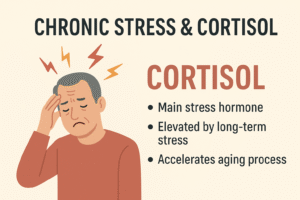
Noise and urban stress: Constant traffic, construction, loud neighbors—these raise baseline cortisol and keep the body in low‑grade “alert” mode.
Clutter, chaos, light & air quality: Poor lighting, stale air, or messy surroundings increase psychological stress, often unconsciously.
Media, negative inputs: Overexposure to negative news, toxic social media, or critical environments (online or offline) increase perceived stress, which correlates with elevated cortisol and inflammation.
Life transitions & timing: Big changes—kids leaving, job transitions, loss, or gaining freedom—can be both stressors and opportunities. How the timing is managed contributes greatly to whether cortisol remains chronically elevated or is allowed to normalize.
These environmental inputs interact with the HPA (hypothalamic‑pituitary‑adrenal) axis. Over time, repeated activation → impaired feedback loops → elevated baseline cortisol or flattened diurnal (day‑night) cortisol rhythms. That, in turn, is associated with poor sleep, immune suppression, metabolic dysregulation, and aging acceleration. Frontiers+2Frontiers+2
Why Timing in Life Matters
Another aspect of environment is life timing. Many of us over 40 are in phases of transition: more free time, changing roles, navigating change. That period is especially sensitive to environmental inputs.
Neuroplasticity does not end—or drop off sharply—after a certain age. Trying something new, exposing yourself to novel environments, learning, and stretching capacities help keep the brain active.
Having a strong purpose or goal can buffer stress responses (lower cortisol spikes, faster recovery). Studies show purpose in life predicts faster cortisol recovery after stressors. Nature
Similarly, resilience, self‑control, and emotional regulation are traits you can develop, which moderate how harshly your system responds to environmental stress. Nature
How to Audit Your Environment in 10 Minutes
Before you can change your environment, you have to observe it clearly. Use this quick self‑audit today: 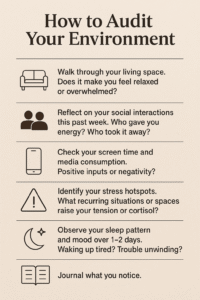
Walk through your living space.
Does it make you feel relaxed or overwhelmed?
What areas are chaotic or uninspiring?
Reflect on your social interactions this past week.
Who gave you energy?
Who took it away?
Check your screen time and media consumption.
Are you feeding your mind positive, growth‑oriented content or negativity?
Identify your stress hotspots.
What recurring situations or spaces raise your tension or cortisol?
Observe your sleep pattern and mood over 1‑2 days.
Waking up tired? Trouble unwinding? Racing thoughts before bed?
Journal what you notice. Awareness always comes before transformation.
6 Practical Ways to Rewire Your Environment for Youthfulness
Let’s get tactical. Backed by science, here are six powerful shifts you can make starting today:
Curate Your Circle of Influence
Spend time with people who inspire growth. Connect with age‑positive role models.
Reduce exposure to negative or limiting conversations.
Upgrade Your Physical Space
Declutter, improve lighting, bring in fresh air and plants. Studies suggest indoor plants and natural light help reduce stress and improve mood.
Create areas for restful activity: reading, stretching, mindfulness.
Limit Toxic Inputs
Morning routines of doom‑scrolling news spike cortisol early in the day. Instead, choose uplifting or educational content.
Be intentional about consumption: social, news, media.
Move With Purpose
Physical movement acts as a cortisol stabilizer. Regular walking, dancing, yoga—all help in restoring HPA axis balance.
Reset Your Nervous System Daily
Practices like breathwork, meditation, cold exposure, or nature immersion reduce baseline cortisol.
Even 10 minutes of meditation/day have been shown to reduce perceived stress and improve cortisol rhythms.
Change Scenery & Embrace Novelty
Travel, local exploration, new experiences stimulate brain plasticity, reduce monotony, and reset perspective.
Novelty helps “reset” stress hormones.
Environment Upgrade Toolkit-
Recommended Products for Your Space & Recovery
| Product | Rating | Description | Benefits | Ideal For |
| Lucky Bamboo Plant | ★★★★☆ (4.8) | Minimalist air-purifying Feng Shui plant | Boosts oxygen, enhances visual calm | Desk, bedroom, meditation area |
| Kindle Paperwhite | ★★★★☆ (4.6) | Glare-free digital reader w/ warm light | Lowers screen stress; encourages learning | Nighttime rituals, growth content |
| Merrell Moab 3 Hiking Shoes | ★★★★☆ (4.6) | Waterproof hiking shoes with arch support | Promotes mobility, nature exposure | Walking groups, solo explorers |
| HoMedics SoundSpa White Noise Machine | ★★★★☆ (4.5) | Portable unit with 6 sound options | Lowers cortisol, improves sleep quality | Bedside or travel relaxation |
Final Thoughts: You Have More Control Than You Think
Understanding your environment’s impact isn’t about finding a perfect lifestyle—it’s about wielding small, consistent choices. Because chronic stress isn’t just “something that happens.” It’s the accumulation of daily environmental cues that whisper: you can’t, you’re slowing down, you’re limited.
But you can choose otherwise.
Every change—what you see, who you spend time with, what you consume mentally—is a signal to your body and brain that you believe in possibility: vitality, energy, growth.
FAQ: Environment & Aging
Q: Can I really reverse aging by changing my environment?
A: You can slow and in some cases reverse certain biomarkers of aging by improving sleep, reducing cortisol, and promoting brain and muscle health—all environment-driven.
Q: What’s one thing I can do today?
A: Declutter your workspace and add a plant or natural light. It instantly lowers stress cues.
Q: How long does it take to see results?
A: Some people feel mood shifts in 48–72 hours after reducing stress triggers and improving light and sound cues.
My Personal Perspective
When I reflect on what’s helped me stay active and provided inspiration in my 50s, it’s not just workouts or clean eating—it’s the intentional environments I’ve strategically aligned myself to be around. When I travel, I seek out spaces and people that lift me up and support the activities I enjoy like cycling, mountain biking, snowboarding, and surfing. At home, I strategically seek residences based on the location and proximity to the activities, restaurants, gym, and work in order to align with my daily routines and removes all the obstacles that would prevent me from accessing these environments.
Because aging isn’t a decline—it’s a design. And you get to be the architect.
So today, pick one environmental change. Maybe stop checking negative media first thing in the morning. Maybe set up a “vitality corner” in your home. Maybe reach out to someone who inspires. It doesn’t have to be big. But it does have to be a conscious action.
Disclaimer: All the content on this site is for informational purposes only, does not constitute medical advice, and does not establish any kind of patient-client relationship by your use of this website. I am not a health care professional. The information, including but not limited to text, graphics, images and other material contained on this website are for informational purposes only. No material on this site is intended to be a substitute for professional medical advice, diagnosis, or treatment. Before starting any new regimen, supplement, diet, or program, it is crucial to consult with a healthcare professional to ensure it is safe and suitable for your individual health needs and circumstances. Here’s a little transparency: This website also contains affiliate links. This means if you click and make a purchase, we may receive a small commission. Don’t worry, there’s no extra cost to you. It’s a simple way you can support our mission to bring you quality content.


